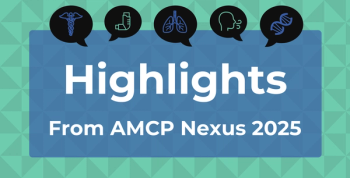
Dr Imran Khan Presents a Closer Look at Teclistamab’s Weight-Based Dosing and Patient-Centric Approach
The FDA recently approved the supplemental biologics license application for teclistamab (Tecvayli; Johnson & Johnson) to treat relapsed/refractory multiple myeloma on a biweekly dosing schedule.
Teclistamab (Tecvayli) is a first-in-class bispecific antibody, with subcutaneous administration, that is
“Quality of life is incredibly important for every patient. We want the patient to have not just quantity of time, but quality of time,” he emphasizes. “We want patients to have a quality of life no matter where they are in their treatment paradigm.”
Transcript
Can you discuss the advantages of weight-based vs blanket dosing?
To start, Tecvayli is the only approved BCMA [B-cell maturation antigen]–targeted bispecific with weight-based dosing, as well as an adaptive step-up dosing schedule. The data we have are from a single-arm study—it's really important to emphasize that—so it's not appropriate to compare to other types of regimens; we simply don't do that with single-arm studies. What we can say, though, is that weight-based dosing is important to help optimize dosing for the individual patient. And that's really critical. For that individual patient, based on their weight, doing weight-based dosing helps first to optimize their dosing. But I will emphasize that anytime we have a single-arm study, we don't do comparisons to other regimens that may be different in terms of their approach.
How does weight-based dosing address potential variations in patient response and tolerance?
The recommended dose is based on a baseline body weight, about 1.5 mg/kg. So if you think about it, a typical patient either receives 1 maintenance treatment vial weekly or biweekly. Having said that, it is expected that the majority of patients—meaning those who weigh at or below about 109 kg, or 240 lb—will require just 1 treatment vial per injection. Ad I can cite from the MajesTEC-1 study that 89% of patients needed only 1 vial per injection, which we're very proud of as well.
During the course of RRMM, when does it become more about QOL than administering yet another treatment?
I think that quality of life is something that's always important, from the time of diagnosis to subsequently in relapse or when a patient unfortunately relapses or is refractory to a treatment. Quality of life is incredibly important for every patient. We want the patient to have not just quantity of time, but quality of time. And so we want them to not just be in remission from a disease, from multiple myeloma, and then unfortunately not have a good quality of life—those are the times of chemotherapy, once upon a time, where that unfortunately was the case—but we want patients to have a quality of life no matter where they are in their treatment paradigm.
As a first-in-class bispecific, how does the efficacy of teclistamab compare with other treatments for RRMM?
Again, I'll reiterate: This is an accelerated approval. It is based on a single-arm study, so it's not appropriate to compare against other treatment options. That's something I wanted to make sure I reiterate. But having said that, in the MajesTEC-1 clinical trial, Tecvayli delivered an overall response rate of almost 62%, with about 57% of these patients achieving a deep response, VGPR [very good partial response] or better, out of the 165. Among the responders,
Also I think it's equivalently important, having said that, Tecvayli has the longest in-market experience by physicians. We have more than 3600 patients thankfully now treated in the US. Why is that relevant? It demonstrates the commitment to address the unmet need, what we've been speaking about in the last few minutes, for patients with multiple myeloma through a portfolio—this is really where we as an organization are very proud of that portfolio—of first-in-class complementary immunotherapies that are really attacking the disease in different ways, not just in the same manner.
That's part of our comprehensive approach when you think of what we're trying to do here. When you take Tecvayli together with Talvey [talquetamab], the target is a different target; Carvykti [ciltacabtagene autoleucel], Darzalex [daratumumab], Darzalex Faspro, that's what we are really looking to do in terms of a comprehensive approach to provide effective treatment regimens for patients across the multiple myeloma continuum, from the time of diagnosis well into multiple lines thereafter when they unfortunately relapse.
Newsletter
Stay ahead of policy, cost, and value—subscribe to AJMC for expert insights at the intersection of clinical care and health economics.









































